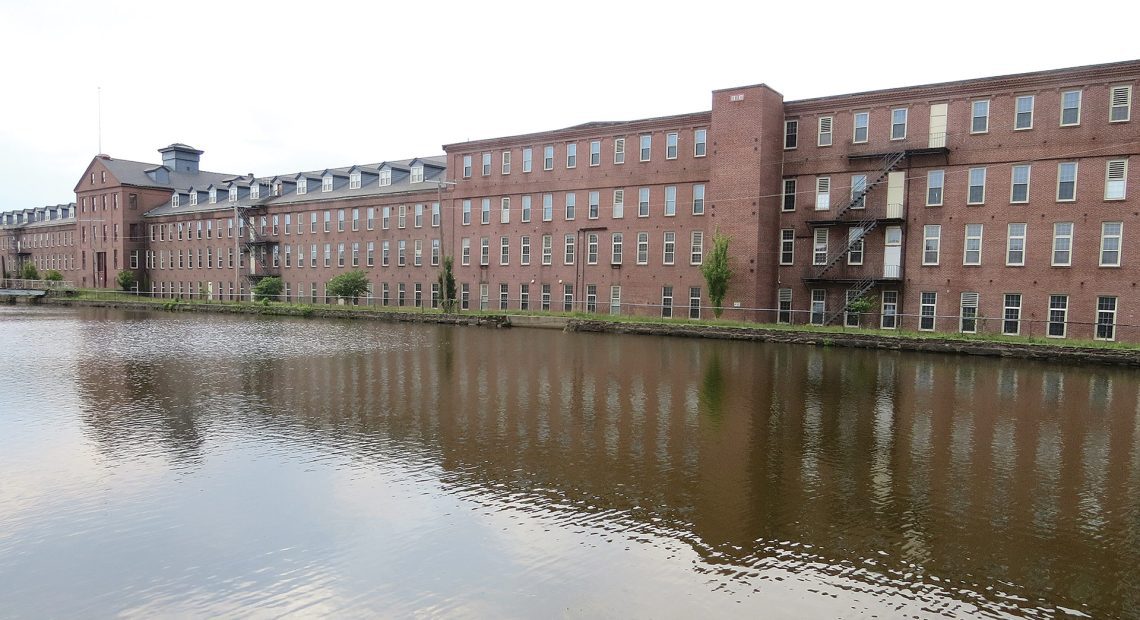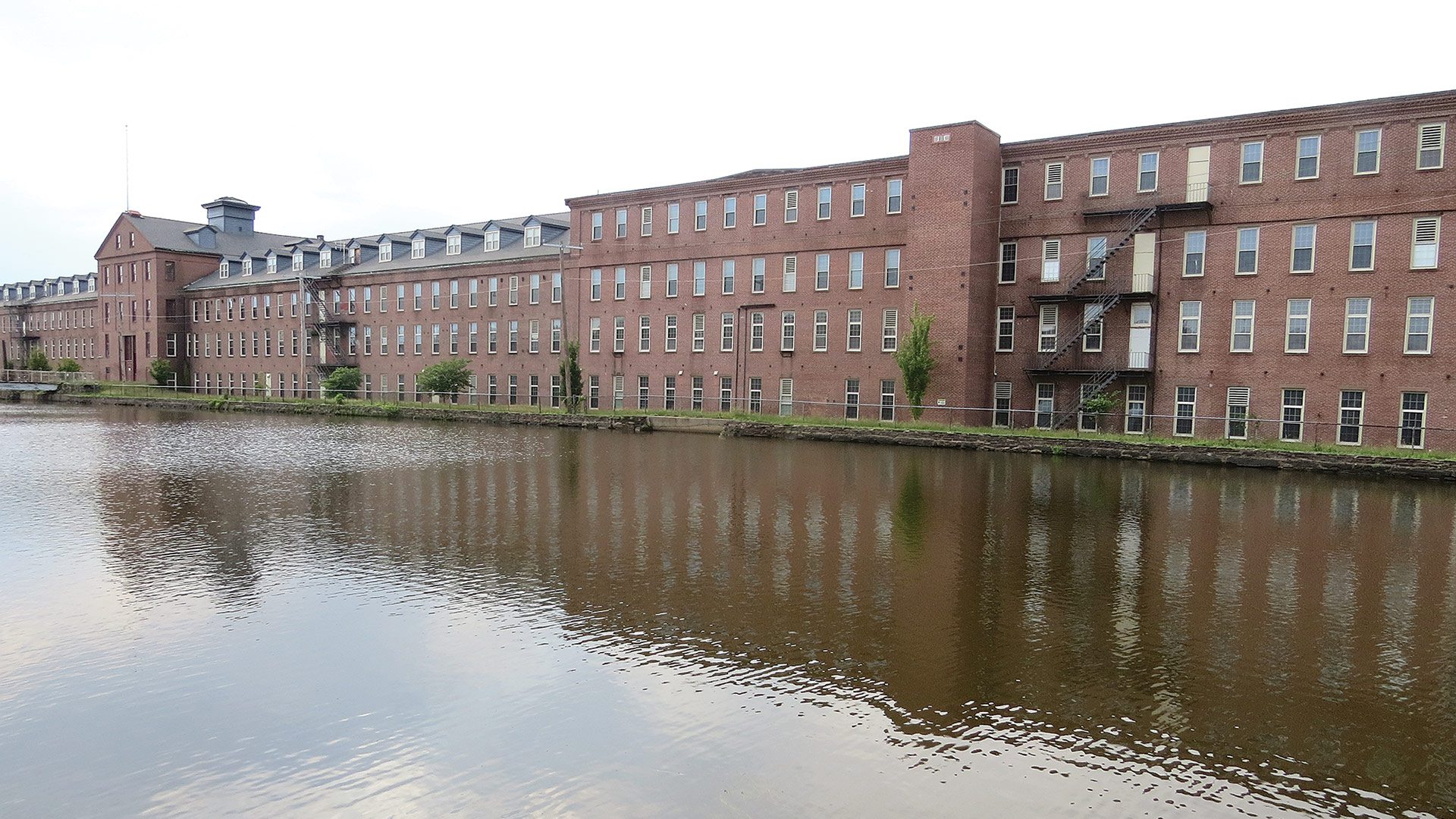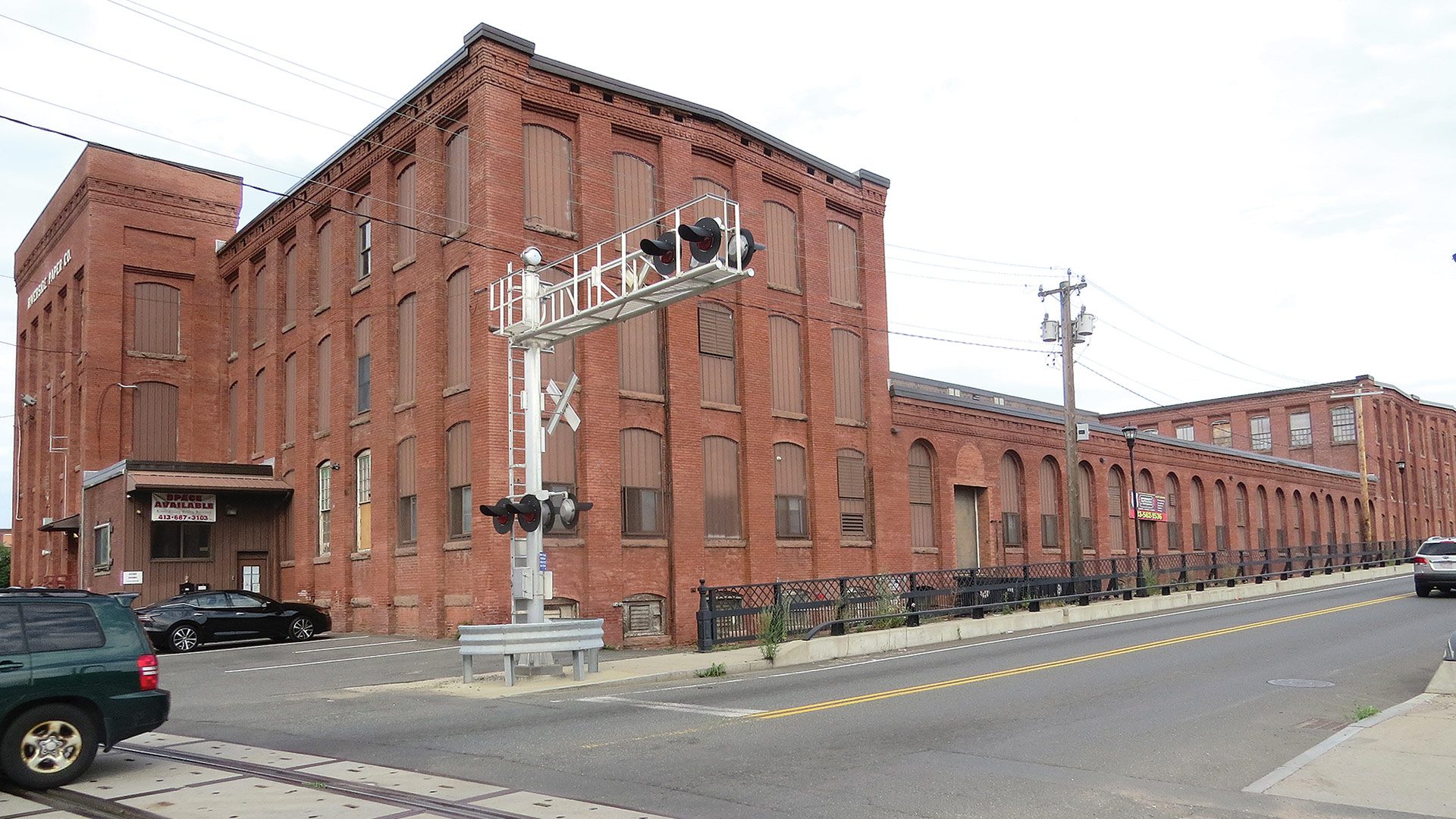
Retreating Cannabis Sector Changes Real-estate Landscape in Holyoke
Building Anxiety

Trulieve will soon be leaving the Massachusetts market, and its property on Canal Street in Holyoke, leaving questions about the site’s future.
Aaron Vega calls it the ‘year of reckoning.’
And he’s not the only one who uses such language when talking about 2023 and the cannabis industry.
This has been a year when a confluence of forces has brought stern challenges to a sector that got off to a fast and hot start in this region. These forces, including mounting competition and falling prices, have prompted some players to exit the market — Truelieve was the latest to make that decision — and others to delay or cancel entry into it.
The impact of these rather sudden changes in the fortunes of the cannabis industry has changed the landscape in many different ways and in many different communities. But perhaps the greatest impact has been on the commercial real-estate market in the city that has most aggressively pursued this sector: Holyoke.
Indeed, a market that was once white-hot as Holyoke officials, led by former Mayor Alex Morse, rolled out the red carpet for cannabis has cooled off substantially, said Vega, director of the city’s Office of Planning and Economic Development, adding that this trend will likely continue as the cannabis sector continues adjusting and responding to the changing climate.
“We’re wondering … how does that property move? What does that company want to sell it for, and what is the acquisition cost going to be? It comes currently with a $300,000 tax bill; that’s a lot of money to keep a building empty. We’re hoping they’re able to move it or work with the city to find a public solution.”
A number of properties have been purchased or leased, and at prices that could not have imagined a decade ago. And as some cannabis businesses close or leave the market and others delay their plans to start, questions mount about all that real estate and what will happen with it.
“A lot of the buildings were locked up because they were purchased at a much higher price than they were probably worth, and now those companies are not going forward, or their timelines are stretched out,” he said. “Are they going to sell these buildings? Are they going to be able to maintain these buildings? They come with tax bills, and they come with maintenance; if you don’t have anything going on inside that you’re making money with, it becomes more of a struggle.”
The most visible manifestation of this changing landscape is the property at 56 Canal St., home (but not for much longer) to Trulieve’s 126,000-square-foot growing, processing, and testing facility, the former Conklin Office Furniture building. Truelieve poured tens of millions into purchasing, renovating, and retrofitting the former mill for cannabis-related uses, said Vega, who wondered out loud how the company could possibly recover that kind of investment given the current fortunes of the cannabis industry.
“We’re wondering … how does that property move? What does that company want to sell it for, and what is the acquisition cost going to be?” he asked. “It comes currently with a $300,000 tax bill; that’s a lot of money to keep a building empty. We’re hoping they’re able to move it or work with the city to find a public solution.”
While some ventures are slated to open in the coming weeks and months, Vega said, there are at least 20 properties for which special permits have been approved — for one or more of the several types of cannabis-related businesses — but where there has been little movement, if any, on site toward opening those businesses.
Vega said he was only half-kidding when he suggested that Trulieve donate its Canal Street property to the city and its redevelopment authority, which could then try to attract more and different kinds of indoor agriculture businesses. Among other things, the transformation of old mills across the city for cannabis-related uses has shown what can be done with those properties, he noted, adding that indoor agriculture could be a growth industry for the city — literally and figuratively — moving forward.
Meanwhile, another emerging model for these mills could be an incubator-like facility, such as the one taking shape at 1 Cabot St., another old mill, the former Riverside Paper Co. building, purchased by Tom and Karen Cusano in 2018.

Tom Cusano says the property at 1 Cabot St. will become an incubator of sorts for several small, cannabis-related businesses, a model he believes has a great deal of promise.
There, several smaller companies, many of them social-equity ventures, are moving forward with plans, Tom said, adding that this is a different kind of model, and one he believes has some staying power.
“We have one operating tenant and four tenants who are in the licensing process, and we’re building out their space — they should be operational within 90 to 120 days,” he said, adding that this model calls for reasonable lease rates, most buildout handled by the owner, and opportunities to grow if and when the businesses do.
For this issue and its focus on commercial real estate, we take a look at what’s happening in Holyoke — and not happening, as the case may be — and what it all means moving forward.
Pot Luck
Vega told BusinessWest that the cannabis experience — and it is ongoing — has benefited Holyoke in a number of ways.
Beyond the hundreds of thousands of square feet of old mill space that has been absorbed and the jobs created, the arrival of this industry has given the city a tremendous amount of exposure locally, regionally, and even nationally and internationally, he said, adding that many people in business who didn’t know about the city’s assets and benefits, from available real estate to green, comparatively inexpensive energy, now do. And this bodes well moving forward.
For the immediate future, though, the relative strength and resilience of the local cannabis industry is the primary topic of conversation in this year of reckoning. At the very least, there are now real questions about whether this sector has already peaked, and if not, how much more it can grow.
To quantify and qualify the changes that have taken place, Vega talked about phone-call volume — as in calls from cannabis companies calling with questions about the city and opportunities to land there — and his overall workload when it comes to handling license applications and related matters.
“When I started in this job two and a half years ago, we were talking to companies once a week, and we had that peak of having 70 host agreements,” he noted. “Working with the City Council, we got 38 special permits approved; that’s a lot of work on a lot of people’s part.
“But now, I think we had two host-community agreements in the last three months, and two projects in front of the City Council and other departments for review,” he went on. “In two years, it’s changed quite a bit.”
Elaborating, he said many of the major players and ‘funders’ in this industry have already moved on to the next emerging markets in this industry, such as Connecticut and New York, with their attention also focused on federal legislation to legalize cannabis.
“With the cannabis industry, it was kind of predatory; everyone looked at it like it was the golden goose. If you had a building, you asked for four times what it was worth, and if you had space to lease, you asked the tenant to spend millions of dollars to fix up your run-down building.”
All of this is reflected in the commercial real-estate market, he said, referencing the large question marks now hanging over several of the properties acquired or leased — at high prices — with cannabis businesses in mind.
Cusano, who purchased his property not long after cannabis was legalized in this state, summed up the market frenzy, if that’s the right term, this way:
“With the cannabis industry, it was kind of predatory; everyone looked at it like it was the golden goose. If you had a building, you asked for four times what it was worth, and if you had space to lease, you asked the tenant to spend millions of dollars to fix up your run-down building. And, quite honestly, very few people could afford that.
“Some of the big, multi-state operators came in with deep pockets and dumped tons of money,” he went on. “And as we can see with Trulieve, that doesn’t seem to work.”
He’s taking a different approach, one he thinks will generate some long-term success.
Indeed, at the Cabot Street property, he’s drawing on 20 years of experience with renovating and then leasing out a former mill building to emerging small businesses in New Hampshire.
“We’re trying to help these small businesses get started; we’re doing the lion’s share of the renovation work and essentially giving them a turnkey operation except for fixtures and whatever they need to run their business, whether they’re doing cultivation, manufacturing, or processing,” he said. “We’ve talked with multiple tenants; we’ll have a retail dispensary in the front of the building that we’re working on.”
Elaborating, he said he and Karen purchased the building “for a song” and have invested far more than $1 million in it thus far. He said he’s had some experience with the cannabis industry in New Hampshire and Maine and understands its potential, both as a source of tenants and its importance to the community in question.
At present, there is one business operating at the property on Cabot Street, Mill Town, a cultivation and light-manufacturing operation, Cusano said, adding that several more are in the pipeline, ventures that will occupy 10,000- to 35,000-square-foot spaces.
He believes this model will fare better than some of the other strategies that have been tried — mostly companies overpaying to purchase or lease property, a situation that adds another layer of challenge to their ability to remain competitive in a rapidly changing market.
“People were overpaying, dumping a ton of money into these properties, and then the market collapsed because of oversupply, and they were upside-down,” he said. “We have a saying in the retail business — you can sell below cost and make up the difference with volume. But not for long.”
Bottom Line
Returning to his thoughts about indoor farming and how properties like the Trulieve facility might be turned over to such uses, Vega said such prospects represent just one of the ways the changing real-estate climate in Holyoke represents both challenge and opportunity.
“Let’s keep the cannabis industry, but let’s also help the local food economy,” he said. “Someone growing lettuce and micrograins can’t afford a $40 million building, but if the redevelopment authority can gain control of that building or sell it without needing to make a profit, and we can get a whole industry or a bunch of small businesses going, we can create a food economy, and that would be huge.”
He acknowledged, without actually saying so, that such plans represent a real long shot. The reality is that, rather than solutions, there might be more question marks for the buildings bought with designs on entering what looked at the time to be a lucrative cannabis sector.
And if things break the wrong way, Holyoke may wind up with what it had before it rolled out the red carpet for this industry — a large number of vacant and underutilized properties.




